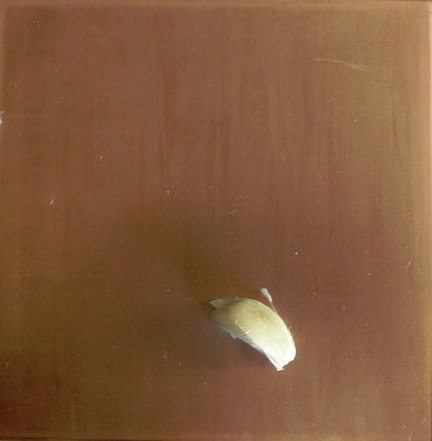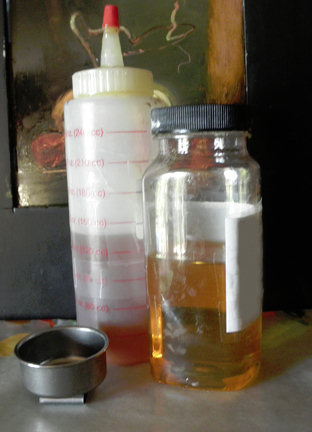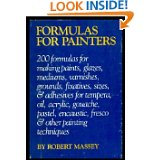At this point, there are a couple of ways to proceed. If your intent is to use the smooth surface much like a prepared panel, then you can gesso it. Or if you want the natural beauty of the copper to glow through then you don’t want an opaque priming. In much of the literature, old school techniques describe a fascinating etching method using garlic. Slice a garlic clove in half and rub the entire surface with the clove.

In a few minutes, the natural juices and acids in the garlic etch the surface which makes it sticky. This stickiness is what allows the initial paint layer to adhere to the surface of the copper. You can feel the splendid ‘drag’ against your brush as you paint. The one irksome issue here is the tiny fibers of the garlic tend to stick to the surface also, so you must brush those off before proceeding.
Not completely satisfied with the garlic technique, and after much trial and error (heavy on the errors here), I tried many different mediums, such as Liquin, but none of them were sticky enough. I wanted something that set up quickly, but most remained too slick on the copper surface. The paint just seemed to slide from one place to another. Then I tried this very ‘sticky’ recipe that resembles Strasbourg medium, and found I could achieve a similar drag on my brush as the garlic.

I found the recipe for this medium in Robert Massey’s Formulas for Painters book on page 110.

Massey says this recipe was “extolled by A. P. Laurie for its molecular properties and said to resemble closely the legendary, but unavailable, olio d’ Abezzo or Strasbourg turpentine.” I make it as follows:
In a double boiler heat infuse the Canadian Balsam – 4 parts with 1 part Sun thickened linseed oil in a glass jar. After removing from the heat, shake and allow to cool somewhat. Then add 2 parts turpentine and shake well again. As you can see from the picture, it has a wonderful amber color. If need be, you can thin slightly with turpentine as you are working. Brush this directly onto the copper surface and allow to sit for a while as you mix your colors. It will form that stickiness and drag against your brush as you paint.
Anybody else tried different mediums on metals? What were your experiences and results?
